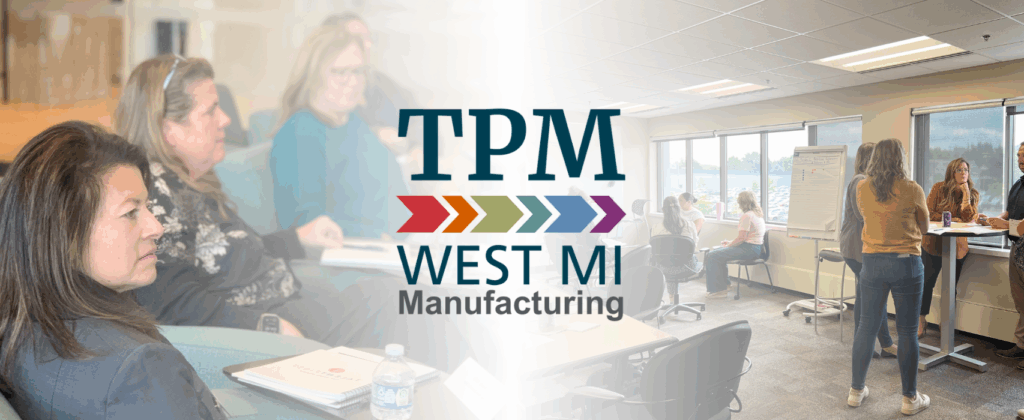On Thursday, September 28th, TalentFirst hosted the second gathering of our HR Council, comprised of West Michigan HR & Diversity strategy leaders, at the Doug Meijer Medical Innovation Building in Grand Rapids. Tracy Brower, PhD, facilitated our learning and discussion focused on Workplace Culture Wins: How to create a culture of attraction, retention & performance.
The workplace was already on a trajectory of change when a once in a lifetime pandemic interrupted our world, rapidly accelerating the change. Brower zoomed in on what we knew about culture and what’s new. We uncovered important insights and discussed practical solutions for creating the conditions to attract, retain, motivate, and engage high quality talent within cultures that perform best.
What is culture?
Culture is a critical center of gravity for a thriving organization where people want to join, stay, and do their very best. It is being created constantly whether intentionally or unintentionally. It is what people do when no one is looking. It is driven by the identity, choices, and behaviors of the people in the organization. It can cultivate belonging or disconnection.
Culture is powerful and must be managed by design, not default. What we see of organizational culture is just the tip of the iceberg. The more we talk about it, the more the middle of the iceberg is exposed, and the more powerful culture becomes.
Workplace Culture: What we knew & what’s new
Workplace culture impacts the stock prices, customer satisfaction, employee retention, and innovation. It also impacts individuals’ physical health, goal setting, learning, performance, and likeability. When people are more engaged in their work, they’re happier and healthier. We knew this.
Disconnection from workplace culture is prevalent in today’s organizations. “Miss COVID”, Brower’s personification of the pandemic, fundamentally severed people’s connection to their employers. The number one catalyst for disconnection is proximity, which quickly became a hazy form in the distance through our rearview mirrors in 2020. We experience culture through interactions with team members and individual relationships. We manage our behaviors based on cues from others. This does not happen when working at home. The fragmentation of our teams has left culture dormant resulting in transactional work, rather than transformational work.
“When we create conditions for people to come together, regardless of their work, we create culture,” Brower stated. Leveraging a metaphor of dirt roads and superhighways, Brower emphasized the importance of opportunities for connection. Dirt roads can be seen as the relationships that may be less traveled – a coffee together every now and then. Whereas superhighways can be seen as moments of connection where people to come together intentionally and by happenstance — not just team building activities or holiday parties, but also the gathering of ideas, collective decision-making, and water cooler conversations.
Fundamentally, culture is shared language, beliefs, values, and system of decision and choice making. The way we can cultivate culture effectively is through a matrix of superhighways connecting individuals to each other in various contexts deliberately and organically. When you create conditions for people to feel connected (e.g., affinity groups, mentorship, informal gatherings, chit chat at meetings), you drive performance significantly.
Ideal Cultures
Brower posed the question to those present, “What words would you use to describe what people expect from your work culture?” Responses included:
- Work-life balance
- Connectivity
- Empowerment
- Impact
- Fulfillment
- Belonging
“When people work for an organization where they feel connected to the mission, they are happier and more engaged,” stated Brower. While acknowledging culture is a deeply personal experience for each employee, Brower offered four cultural characteristics with proven positive outcomes for organizations:
- DIRECTION | clear vision, mission & direction
- INVOLVEMENT | participation & voice
- CONSISTENCY | clear processes, roles & conflict management
- ADAPTABILITY | learning, listening to others — the market, customers & competitors
Culture is critical to the choices we make about where we focus our work efforts. Our daily interactions and behaviors are a mirror of culture. As the talent market is more challenging with the talent shortage and shift of power away from organizations, we must be discerning about the choices we make and what we are offering people. Be clear about the why behind the perks, benefits, and everyday expectations within your space (literal and figurative).
It is not about foosball tables, having beer on tap, or offering unlimited vacation time. It is about the WHY. Why provide place and space for people to play, socialize, or get away? Place shapes behavior, and behavior over time is culture.
As HR and diversity leaders discussed what they have learned or were surprised by in their own cultures over the past few years, Brower encouraged us to pay attention to those things that surprised us as surprises reveal an assumption in our brains. She also pointed out the reason many folks left organizations as part of The Great Resignation was because of negative surprises in workplace culture.
The Role of Organizational Leaders
Leaders have an outsized impact on organization culture, especially now. Leaders have become a single source of truth, and yet, culture out lives a single leader. A culture is significantly determined by the worst behavior it will tolerate. What is the worst behavior being tolerated in your organizational culture and how can this change?
Shifting culture is like turning a tanker, not a speedboat. People are paying attention to their leader and scrutinizing their words and behaviors at every turn to understand what is acceptable, what is safe, and if they belong. The leader’s role is increasingly important, and the emotional labor of leadership is real.
69% of people say their leader has a greater impact on their mental health than their medical provider or therapist and is on par with their partner.
Leaders must model the way for the culture they desire, by modeling how you…
- Spend your time
- Interact with others
- Deal with difficulty
- Navigate priorities
Align your behaviors with your words so that your people actually hear what you are saying.
Tangible Takeaways
In the end, Brower summarized our energizing and inspiring session with four key takeaways as we seek to shape a culture of attraction, retention, and performance in our organizations:
- Be explicit and redundant
- Measure, monitor, improve, and evolve
- Develop leaders
- Model the way
This is our moment for a bright future! Be intentional about designing the culture you want for your people.
Click here to learn more about TalentFirst’s HR Council and how to become a member.


